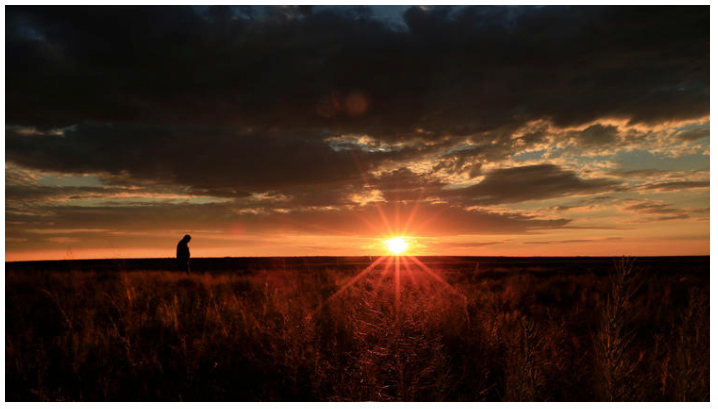Aren’t You Dead Yet?
Last December I wrote an essay for The Times about what I wanted to do with my life after I was diagnosed with terminal cancer.
In July of 2015 — despite multiple surgeries, rounds of radiation, and chemotherapy — three doctors had given me and my husband their bleak perspectives on how much time I had left: “six to nine months,” “months to a year,” “a yearish.”
In the weeks that followed my public coming out about the grim news, a benevolent tidal wave of comments and emails washed over me from friends, co-workers and many thousands of strangers. Now when I run into friends on the streets of my town, they hug me and tell me I look great. But I can see it in their eyes; what they really want to say is, “Aren’t you dead yet?”
Well, no. As it turns out, I became a terminal cancer patient at a time of sea change in research on the disease. As Siddhartha Mukherjee, oncologist and author of the Pulitzer Prize-winning “Emperor of All Maladies,” puts it, cancer care has entered a “mapless moment” for doctors and their patients.
To that I am living proof. I thought I’d be gone by the end of this summer, but now my calendar has lengthened in ways my doctors couldn’t have imagined even a year ago. For obvious reasons, I’m a devotee of living fully in the present, but recently I’ve been allowing myself to imagine a future too: a 60th birthday this fall, another Christmas, maybe more.
What changed? Genome-sequencing technologies and immunotherapy — a new set of medicines that help patients like me use our bodies’ natural defenses to fight cancer. These treatments simply didn’t exist a few years ago. Unlike chemotherapy and other standard approaches, the breakthroughs tend to produce few crushing side effects. The poster child for immunotherapy is former President Jimmy Carter, who was given a terminal diagnosis when melanoma metastasized to his liver and brain in 2015. He underwent treatment, and around three months later, his cancer had made an astonishing full retreat.
My cancer has backed away too. Under the care of oncologist Dr. Alain Algazi, a skin cancer specialist and research scientist at UC San Francisco, my treatment consists of two parts. The first involves a clinical trial with an experimental gene therapy regimen. Since the fall I have been getting injections of the genetic material pIL-12 with electroporation (yes, that’s electric shock) on a six-week cycle. (Our next-door neighbor, a genetic scientist, calls me a human GMO.) The gene therapy regimen is designed to make my tumors more likely to respond to the second part of my treatment: Despite it’s not being approved by the Food and Drug Administration for my type of cancer, I have received infusions since January of Keytruda (pembrolizumab), the immunotherapy drug taken by Carter.
One new tumor has appeared, under my left arm, but all other detectable cancer has vanished. A golf-ball-size lump under my right arm shrank and then was nowhere to be found. A lesion on my spleen has gone missing. Most significantly, a cancerous “large neck mass” that was positioned to kill me quickly — it had doubled in size as of last December — not only stabilized in April, a recent PET scan showed all signs of cancer in this area to have simply disappeared.
I feel fine. I live well, though scan-to-scan. Nobody knows how long the good news will last for me or other cancer patients who are responding to immunotherapy. But some have already survived for years after their predicted deaths. Like me they probably feel a miraculous gift — unanticipated time of unknown duration — has been dropped into their laps.
It is true that a cheerless outlook remains for most patients with any type of cancer that has metastasized in the body. Immunotherapy regimens don’t exist for all types of cancer, and wrenchingly, many patients who could be helped can’t get access to drugs and clinical trials that could make a difference for them. Finally, for some patients who seem like a good match for the therapies, the treatments simply don’t work. Nobody knows why. Not yet.
Still, after decades of failed promises to “cure” cancer, it’s easy to understand why research oncologists are feeling optimistic right about now. They have real hope. It’s possible patients of the future will experience cancer as something more like a chronic disease, a frightening but manageable illness as opposed to the indiscriminate killer that now enters the lives of 14 million people worldwide every year.
My place in the timeline of these changes is at the inception, and there is much yet that is not understood. My treatments are stretching the good time I have left, not lifting my death sentence. I am still coming to terms as best I can with my own unequivocal transience.
But no, I’m not dead yet.
When people are surprised to see me, I tell them I’m among the early fortunate. I am grateful each day for my husband, family and friends. Facing death on a close horizon has heightened my awareness that our time on Earth is finite. But quite unexpectedly it has also made me a living, breathing advertisement for humanity’s hopeful new edge on cancer.
Melinda Welsh is the former editor of the Sacramento News & Review.
.

